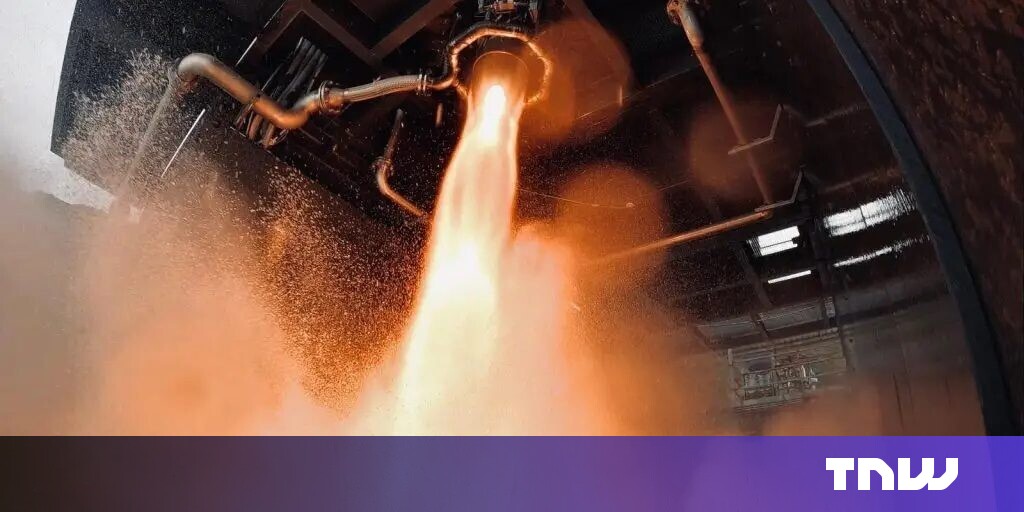Scotland's 3D-Printed Rocket Engine: Ready for Lift-Off?
Editor’s Note: Scotland's groundbreaking 3D-printed rocket engine has reached a critical milestone, paving the way for a new era in space exploration. This article delves into the significance of this development.
Why This Matters: A Revolution in Rocket Propulsion
Scotland's foray into 3D-printed rocket engines represents a significant leap forward in space technology. This innovative approach promises to revolutionize the aerospace industry by drastically reducing manufacturing costs and lead times. The implications are far-reaching, impacting everything from the frequency of space launches to the accessibility of space exploration for smaller companies and research institutions. This article will explore the key aspects of this technological advancement, its implications for the future of space travel, and the challenges that still lie ahead. We'll also examine the economic benefits for Scotland and the potential for global impact.
Key Takeaways
| Feature | Description |
|---|---|
| Technology | Additive Manufacturing (3D printing) of a rocket engine using specialized alloys. |
| Significance | Reduced costs, faster production, potential for lighter and more efficient engines. |
| Impact | Increased accessibility to space, fostering innovation and economic growth. |
| Challenges | Ensuring reliability and safety, scaling production for wider adoption. |
Scotland's 3D-Printed Rocket Engine
The development of Scotland's 3D-printed rocket engine marks a pivotal moment. This isn't just another incremental improvement; it's a paradigm shift. By utilizing additive manufacturing techniques, engineers have overcome many traditional limitations associated with rocket engine production. The ability to create complex geometries with unprecedented precision opens doors to designs previously deemed impossible, leading to potentially more efficient and powerful engines. This leap forward is particularly significant in today's rapidly evolving space race, where cost-effectiveness and speed of development are paramount.
Key Aspects:
- Material Science: The selection of high-temperature, high-strength alloys specifically designed for 3D printing is crucial for the engine's performance and reliability.
- Design Optimization: Topology optimization techniques allow for the creation of lightweight yet incredibly strong engine components, maximizing efficiency.
- Manufacturing Process: The 3D printing process itself is a complex undertaking, requiring precise control over temperature, pressure, and material deposition.
Detailed Analysis:
The reduction in manufacturing time and costs is arguably the most impactful aspect. Traditionally, rocket engine production involves lengthy and expensive machining processes. 3D printing streamlines this, enabling faster prototyping and iteration, leading to quicker development cycles and reduced overall expenditure. This opens the possibility for smaller space companies to compete effectively with larger, more established players. Furthermore, the ability to produce engines with complex internal channels could lead to improvements in fuel efficiency and thrust.
Interactive Elements: The Future of Propulsion
The Economic Impact on Scotland
The development of this technology positions Scotland as a leader in advanced manufacturing and space technology. This success attracts investment, creates high-skilled jobs, and strengthens the nation's reputation on the global stage. The potential economic benefits are significant, boosting not only the aerospace sector but also related industries.
Challenges and Mitigation Strategies
While promising, 3D-printed rocket engines still face hurdles. Ensuring the reliability and safety of these engines is paramount. Rigorous testing and validation processes are crucial to mitigate risks. Scaling up production to meet future demands will also require significant investment in infrastructure and expertise.
People Also Ask (NLP-Friendly Answers)
Q1: What is Scotland's 3D-printed rocket engine?
A: It's a rocket engine manufactured using additive manufacturing (3D printing) techniques, promising reduced costs and faster production times compared to traditional methods.
Q2: Why is this engine important?
A: It represents a significant advancement in space technology, potentially lowering the cost of space travel and making space exploration more accessible to smaller companies and research institutions.
Q3: How can this engine benefit me?
A: Indirectly, it could lead to lower costs for satellite services, improved weather forecasting, and advancements in scientific research related to space exploration.
Q4: What are the main challenges with this technology?
A: Ensuring the reliability and safety of 3D-printed engines, and scaling production to meet increased demand, are major challenges.
Q5: How to get involved with this technology?
A: Individuals can explore careers in aerospace engineering, materials science, or related fields. Companies can invest in research and development related to additive manufacturing and space propulsion.
Practical Tips for Understanding Scotland's 3D-Printed Rocket Engine
Here are some tips to better grasp this groundbreaking technology:
- Research additive manufacturing: Learn about different 3D printing techniques and their applications in various industries.
- Explore material science: Understand the properties of alloys used in high-temperature applications.
- Follow industry news: Stay updated on the latest developments in space technology and 3D printing.
- Engage with experts: Seek out information from researchers and engineers working in this field.
- Support educational initiatives: Encourage STEM education to cultivate future talent in aerospace and manufacturing.
- Consider ethical implications: Reflect on the societal and environmental impacts of space exploration.
Summary: Scotland’s 3D-printed rocket engine represents a significant technological leap forward, potentially revolutionizing the space industry by dramatically reducing costs and lead times. While challenges remain, the potential benefits are immense.
Closing Message: The successful development of this engine paves the way for a more accessible and affordable future of space exploration. What innovations do you envision arising from this technological breakthrough?
Call to Action: Share this article with your network to spread awareness of Scotland's pioneering work in space technology! Learn more about additive manufacturing by visiting [link to relevant resource].

